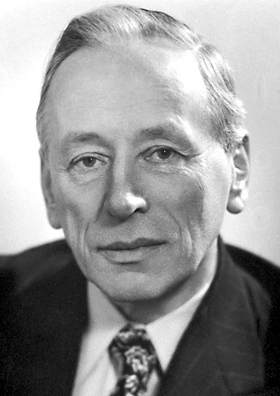Frits Zernike facts for kids
Quick facts for kids
Frits Zernike
|
|
|---|---|

Zernike in 1953
|
|
| Born |
Frits Zernike
16 July 1888 |
| Died | 10 March 1966 (aged 77) Amersfoort, Netherlands
|
| Nationality | Dutch |
| Alma mater | University of Amsterdam |
| Known for | Phase-contrast microscopy Zernike polynomials Ornstein–Zernike equation Van Cittert–Zernike theorem |
| Awards | Rumford Medal (1952) Nobel Prize in Physics (1953) Fellow of the Royal Society |
| Scientific career | |
| Fields | Physics |
| Institutions | Groningen University |
| Influences | Jacobus Kapteyn |
Frits Zernike (born July 16, 1888 – died March 10, 1966) was a brilliant Dutch scientist. He was a physicist, which means he studied how the world works. In 1953, he won the famous Nobel Prize in Physics. He received this award for inventing something amazing: the phase-contrast microscope. This special microscope helps us see tiny things like cells without harming them.
Contents
Early Life and Studies
Frits Zernike was born in Amsterdam, Netherlands, on July 16, 1888. His parents, Carl and Antje, were both math teachers. Frits especially loved physics, just like his dad.
He went to the University of Amsterdam for his studies. There, he focused on chemistry, but he also studied a lot of math and physics.
Becoming a Professor
In 1912, Frits won an award for his research on how gases can become cloudy, a process called opalescence. A year later, in 1913, he started working with Jacobus Kapteyn. Kapteyn was a famous astronomer at Groningen University.
Frits Zernike quickly became a respected scientist. In 1915, he became a lector (a type of senior lecturer) at Groningen University. He taught about theoretical mechanics and mathematical physics. By 1920, he was promoted to a full professor.
The Phase-Contrast Microscope
One of Zernike's biggest discoveries came in 1930. He was studying spectral lines, which are like unique light fingerprints from different materials. He noticed something strange about "ghost lines" that appeared next to the main lines. These ghost lines had their light waves shifted in a special way.
This discovery gave him an idea. He thought, "What if I could use this light shift to see things that are usually invisible?" In 1933, he first explained his new idea for a "phase contrast" technique. This led to the invention of the phase-contrast microscope during World War II.
Why the Microscope is Special
Before Zernike's invention, scientists had to stain cells to see them clearly under a microscope. But staining often killed the cells. Zernike's phase-contrast microscope changed everything. It allowed scientists to see the inside of living cells without staining them. This was a huge step forward for biology and medicine.
Improving Optical Tools
Frits Zernike also made important contributions to how we understand flaws in optical tools. Think of a microscope or a telescope. Sometimes, the images they produce aren't perfectly clear. These imperfections are called aberrations.
Zernike created a new way to describe these flaws using special math tools called Zernike polynomials. These polynomials helped scientists design better lenses and mirrors. Since the 1960s, Zernike's work has been widely used to improve optical design and image analysis.
He also helped us understand how light sources work together. This is called coherence theory. In 1938, he published a simpler way to understand how light from far away sources becomes "coherent" or organized. This is now known as the Van Cittert–Zernike theorem.
Later Life and Legacy
Frits Zernike passed away in 1966 in Amersfoort, after being ill for some years. His work left a lasting impact on science.
Awards and Recognition
- In 1946, Zernike became a member of the Royal Netherlands Academy of Arts and Sciences.
- In 1953, he received the ultimate honor: the Nobel Prize in Physics.
- In 1954, he became an Honorary Member of The Optical Society (OSA). He was also elected a Foreign Member of the Royal Society.
Zernike's name lives on in many places:
- The university area in Groningen is called the Zernike Campus.
- There's even a crater on the Moon named after him!
His great-nephew, Gerard 't Hooft, also won the Nobel Prize in Physics in 1999, showing a family talent for science!
See also
 In Spanish: Frits Zernike para niños
In Spanish: Frits Zernike para niños
- Leonard Ornstein
- Coherence theory
- Fourier optics
- Live cell imaging
- Optical aberration
- Phase-contrast X-ray imaging
- Physical optics

